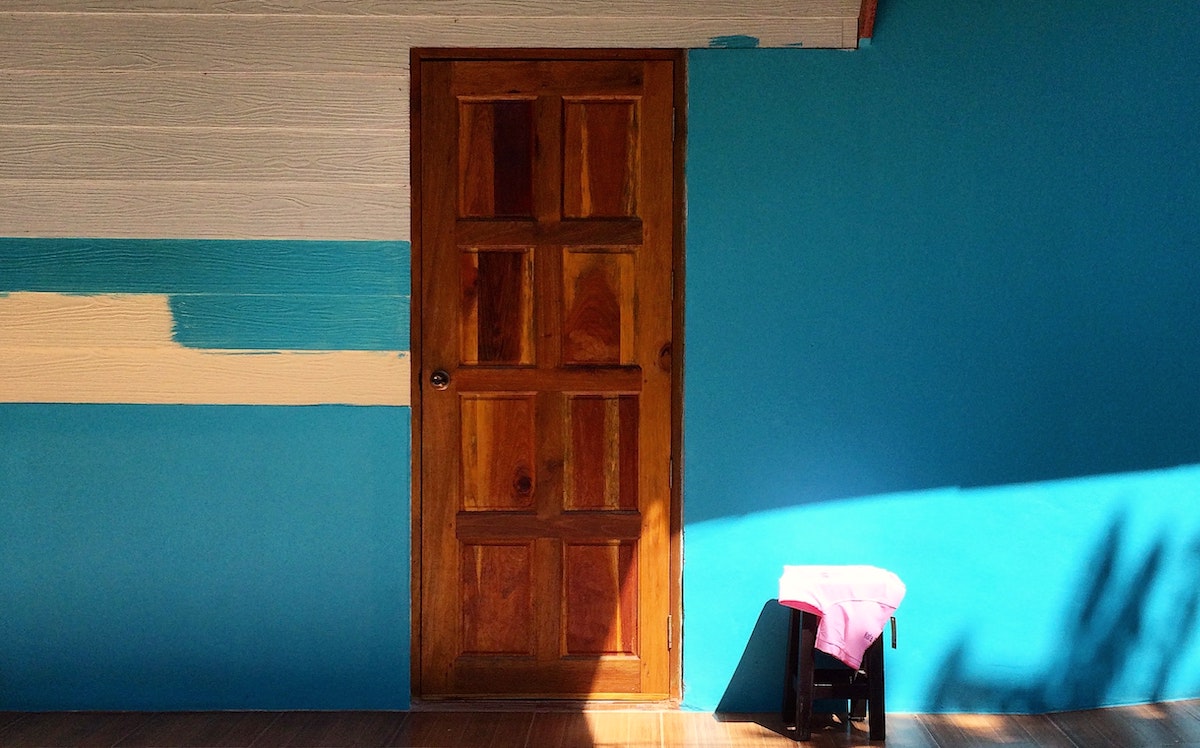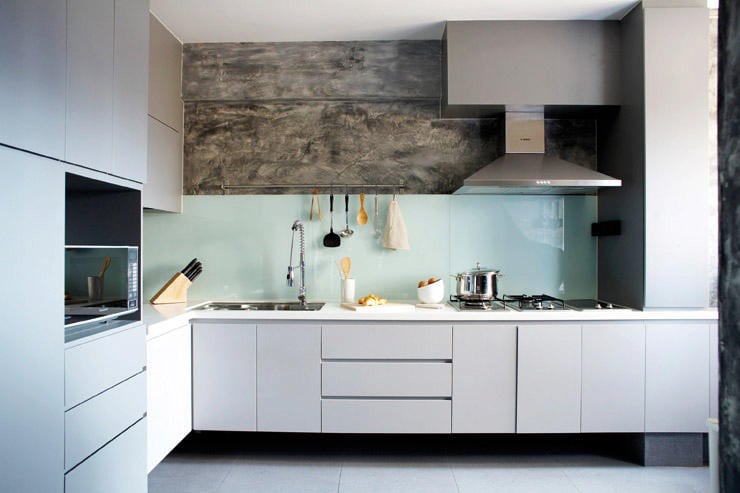
Looking to upgrade your home with a stylish timber door? You’ve come to the right place. Timber doors bring warmth and elegance to any space, whether it’s your main entrance or an interior door. Choosing the right company is key to getting the perfect door for your needs. Let’s explore some top timber door companies to help you find the best fit for your home with this Homees guide.
11 Best Timber Door Companies In Singapore (Our Top Picks)
Companies | Services | Address | Ratings |
Homees Concierge Service | Homees Concierge Service Team - tell us what you need and we'll help get it solved. Talk to us today by giving us a call or Whatsapp us now. | 994 Bendemeer #03-04 Singapore 339943 | Average Rating: 5/5 |
AT Aluminium | - Window Grill Installation | 39 Woodlands Close #01-16 Mega@Woodlands Singapore 737856 | Average Rating: 5/5 |
Gate Door Window | - HDB Gate Replacement | 19 Woodlands Industrial Park E1 #01-01 (Main Office) Pioneer Point | Average Rating: 5/5 |
SG Doors | - Door Installation | 5 Sungei Kadut Ave Singapore 729642 | Average Rating: 5/5 |
Laminate Door | - HDB Gate Replacement | Tradehub 21, 18 Boon Lay Way, #03-133 Singapore 609966 | Average Rating: 5/5 |
Go Digital Lock Pte Ltd | - Metal Gates Installation | 1 Tampines North Drive 3, #02-06 Singapore 5284999 | Average Rating: 5/5 |
Pang Giap | - Stairs & Railing Installation | No 9 Defu Lane 3 #01-10L Singapore 539441 | Average Rating: 5/5 |
Siong Door | - Door Hardware | 1072 Eunos Avenue 5 #01-170 Singapore 409751 | Average Rating: 5/5 |
Goodhill Doors | - HDB Gate Replacement | 9 Sungei Kadut Street 5 Singapore 728956 | Average Rating: 5/5 |
Central Aluminium & Glass Construction | - Metal Gates Installation | 132 Woodlands Industrial Park E5 Singapore 757853 | Average Rating: 5/5 |
Good Wood Doors & Joinery Works | - Door Hardware | Block 6 Lorong 8 Toa Payoh Industrial Park #01-1305 Singapore 319058 | Average Rating: 5/5 |
Wee Ping Aluminium Contractor | - Door Installation | Tampines North Drive 1 #07-23 T-Space Singapore 528559 | Average Rating: 5/5 |
Hire Timber Door Services In Singapore
View All Timber Door Companies
Cost of Timber Door Services in Singapore
Planning a condo or HDB renovation requires a thorough understanding of the cost of timber door services in Singapore. Typically, you’d refer to the service type (door installation or repair) and door material (e.g., oak, cedar), but you must also consider the property type. For example, custom installation costs for mahogany timber doors will likely be higher than for pine because of the material’s higher quality. On the other hand, replacing a main or fire-rated door in an HDB or any door in a condo may incur extra costs for permit fees.
Below is a table with rough estimates for standard timber door services.
Timber Door Service Type Estimated Cost (SGD) Custom Timber Door Installation $400–$600 (main doors) $200–$350 (bedroom doors) Fire-Rated Door Installation $500–$800 Timber Door Repair $100–$300 Maintenance (e.g., sealing) $50–$150
The abovementioned figures are indicative, as quotes depend on complexity and contractor expertise. For detailed breakdowns, check out the Homees Door Cost Guide.
Types of Timber Door Services in Singapore
Singapore’s premier timber door companies provide specialised services tailored to meet the needs of both residential and commercial clients, ensuring high-quality installations and durable solutions. These services vary from custom and fire-rated door installations to repair, maintenance, and expert consultation for material selection. Utilising materials like oak and cedar, providers ensure doors withstand Singapore’s humid climate. Below are key services offered by reputable firms in this guide, enabling clients to enhance their properties with functional and elegant timber doors.
Custom Timber Door Installation
Custom timber door installation delivers tailored oak panelled or mahogany French doors for Singapore’s tropical conditions. Companies like SG Doors, featured in our door installation company guide, install doors for HDB flats and condominiums, ensuring precise fitting and weather-resistant seals. Site assessments confirm dimensions and material suitability, with installations enhancing durability and aesthetics. These bespoke solutions address unique architectural needs, delivering seamless integration with both interiors and exteriors for a lasting visual appeal.
Timber Fire-Rated Door Installation
Fire-rated timber doors meet Singapore’s building regulations for HDB flats and commercial spaces. Licensed fire-rated door contractors install certified cedar or oak doors, ensuring fire resistance and style. Services include supplying compliant doors and professional installation to safeguard occupants while maintaining aesthetic consistency. This service is crucial for safety-conscious clients in Singapore’s urban environment who seek regulatory-compliant solutions.
Timber Door Repair and Maintenance
Timber door repair and maintenance help preserve the longevity of doors in Singapore’s humid climate. Door contractors like Laminate Door, highlighted in our professional door repair in Singapore guide, can repair scratches or warping on oak doors, restoring functionality. Maintenance, such as sealant application, prevents deterioration, ensuring HDB or commercial doors remain durable and appealing. These services extend door lifespan, reducing replacement costs for clients and maintaining structural integrity.
Consultation and Material Selection
Consultation services help clients select timber doors that align with their budget and design needs. Providers like AT Aluminium assess humidity resistance and aesthetic goals, recommending materials like pine for affordability or Accoya for durability. This ensures informed choices, aligning doors with Singapore’s climate and stylistic requirements. Such guidance is essential for clients navigating diverse timber door options.
Have you found a top timber door company, but are still unsure about the timber material and design you want? Check out the Homees’ comprehensive guide on timber door types and styles to get the full scoop before engaging a professional!
How to Choose the Right Timber Door Contractor in Singapore
Finding a trustworthy timber door contractor in Singapore can make or break your home renovation. With many companies offering services like installation or repair, you need to focus on expertise, compliance, and value. This guide shares practical steps to pick the right contractor for your timber doors, tailored to Singapore’s unique needs.
Evaluate Experience and Certifications
Look for contractors with a solid track record, featured in our door installation company guide. Certifications from the Building and Construction Authority (BCA) or ISO signal reliability. As expected, experienced contractors know how to handle Singapore’s humidity, choosing materials like cedar to avoid warping. Check their past projects or reviews to confirm they can install durable, stylish doors for your HDB flat or condo.
Understand HDB and Condo Regulations
Singapore’s strict rules, particularly those from the Housing & Development Board (HDB), mandate fire-rated doors for HDB flat entrances, typically with ratings of 30–60 minutes. Condo management often has similar standards. Contractors like Siong Door navigate these regulations, securing permits and ensuring safety.
Questions to Ask Your Timber Door Contractor
To pick the best contractor, ask pointed questions to gauge their expertise:
- Which timber, like oak or Accoya, suits Singapore’s humid climate best?
- Are your doors certified for HDB fire safety standards?
- Can you share photos or references from past timber door projects?
- What’s the timeline and cost for installing a custom mahogany door?
- Do you provide maintenance to prevent issues like swelling?
Compare Pricing and Warranties
Pricing for timber door services depends on materials and job complexity. Get quotes from multiple contractors to find fair rates. A detailed cost breakdown covering installation or repairs is a must. It’s worth double-checking warranties—typically 1–5 years—to cover defects. Reliable contractors offer clear pricing and solid warranties, giving you peace of mind for your investment.
Compare and Review the Best Timber Door Installation Companies in Singapore
Ready to enhance your HDB flat or condo with a timber door? Explore top contractors on Homees for expert installation tailored to Singapore’s humid climate. Compare services, pricing, and reviews to find the perfect fit for your home. Visit our door installation services guide to discover trusted timber door companies in Singapore and start your renovation today.
Frequently Asked Questions (FAQs) about Timber Door Companies in Singapore
Can I install a timber door myself in Singapore?
Timber’s easy-to-cut nature tempts DIY, but Singapore’s HDB rules demand proper installation from a licensed door contractor for all fire-rated doors and precise fits. While contractors like SG Doors handle compliance and durability, they save you from costly mistakes and fines.
What’s the difference between timber and wood doors?
Let’s clear this up: timber is wood processed into planks for sturdy doors, unlike raw wood. This makes it perfect for construction. For more on cedar or Accoya, check our timber door types and styles guide, a must for homeowners.
Are timber doors suitable for eco-conscious homeowners?
Yes. Timber is renewable because trees regrow over time. Moreover, it can be recycled into furniture, reducing waste. Many door suppliers in Singapore source sustainable wood, which appeals to environmentally conscious owners. This eco-edge makes timber a top choice for condos.
Are timber doors suitable for Singapore’s humid climate?
Yes. When sealed properly, timber doors resist waterlogging and warping in Singapore’s humidity. Materials like cedar and oak offer lasting strength that can give your Tampines home a flawless look for years with proper sealant and alignment maintenance.
What services can I expect from timber door companies in Singapore?
From installation to repairs, companies like Goodhill Doors deliver. They provide custom designs, HDB-compliant fire-rated doors, and sealant applications to fight humidity. These keep your doors stylish and functional, whether for an HDB flat or a commercial space.
How often do timber doors need maintenance?
Modern timber doors are low-maintenance, needing sealant every six years to prevent fading or warping. A quick annual inspection from a condo or HDB door contractor helps maintain their look and strength.
Homees.co
For seamless access to Singapore’s leading timber door solutions, trust Homees.co. Our platform connects you with vetted contractors for installation, repair, or custom designs, ensuring durability and style. A Jurong homeowner found their ideal oak door through our service. Explore our timber door services page to request quotes and transform your space with confidence.
We’re here to improve your home
Speak to hundreds of reliable pros, view their gallery, inspirations, and know the best prices with our resources.
Have full control over your home improvement projects with Homees.





